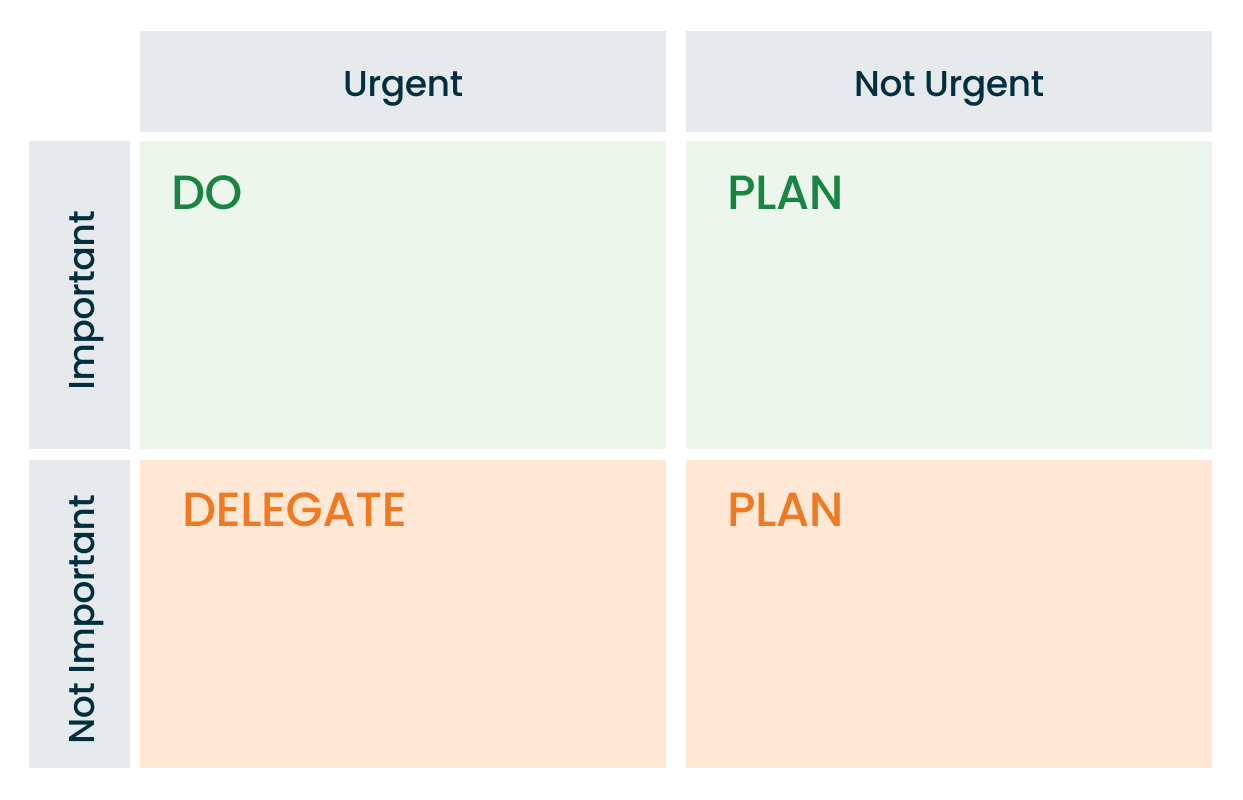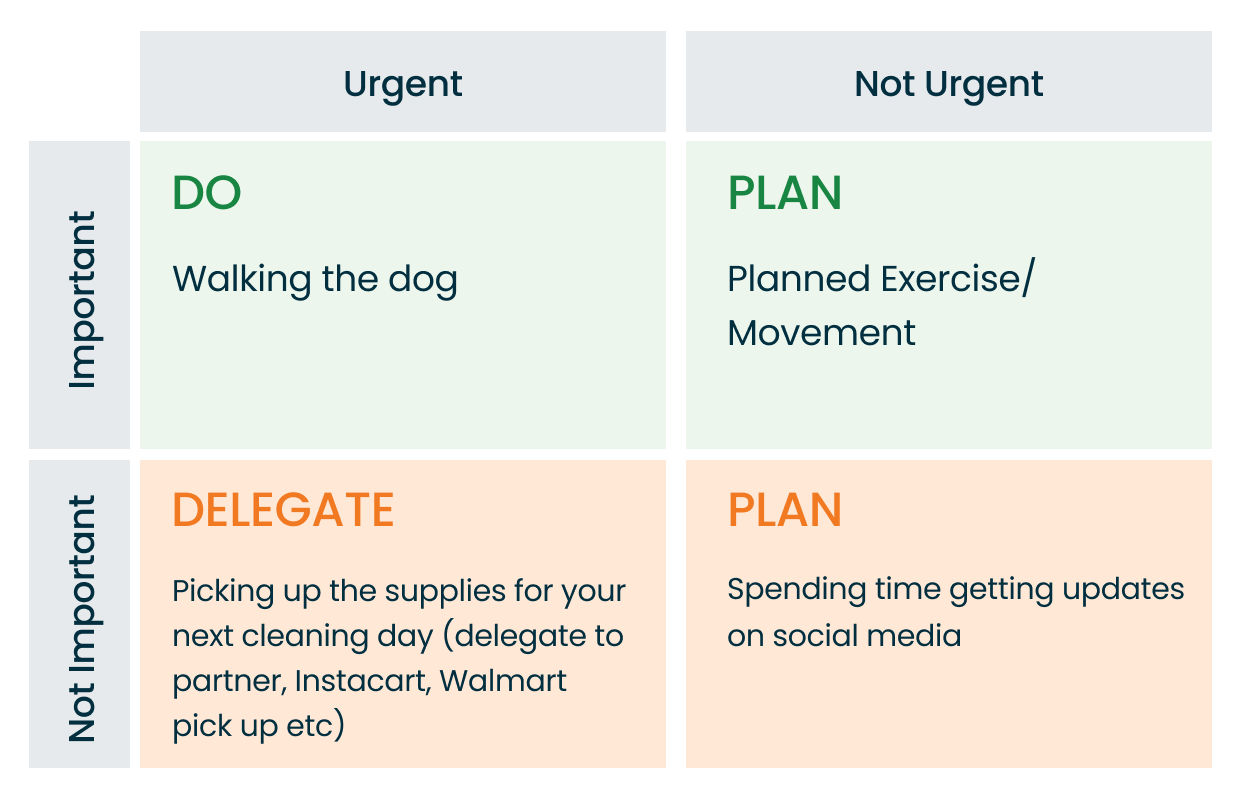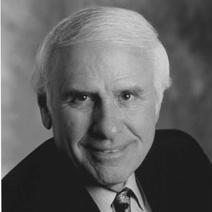Prioritizing effectively is a skill that develops over time. It involves determining which tasks, projects, or goals deserve your attention first, based on what truly matters to you. This skill strengthens as you think critically, reflect on your values, and take a good look at where you’re at right now.
If you’re reading this article, managing your blood sugar is likely a priority for you—and for good reason. Keeping blood sugar levels in check is essential for your health and longevity, especially when managing a condition like diabetes. However, prioritizing your health goes beyond that. It’s about identifying what matters most to you and setting clear, actionable goals to support your overall well-being. From physical activity and nutrition to stress management, understanding how to focus your efforts is key to staying on track and achieving your health goals.
Setting Priorities for Your Health Goals
Knowing where to start and what to prioritize can feel overwhelming. However, before you begin prioritizing, it’s essential to define your “why.” This “why” is your personal mission statement—the reason you get up in the morning and the fuel that keeps you going when things get tough. Personal mission statements can evolve and change over time, so there’s no need to worry about getting it perfectly right.
Here are a few steps to help you identify your personal mission statement:
- Reflect on Your Values: Think about what matters most to you.
- Identify Your Passions: Consider what activities bring you joy.
- Set Clear Goals: Define what you want to achieve in life.
- Recognize Your Strengths: Acknowledge your skills and talents.
- Draft Your Statement: Combine your values, passions, goals, and strengths into a concise mission statement.
Your personal mission statement could include something like wanting to play with your kids without getting winded or seeing better lab results at your next doctor’s visit. For example, a mission statement might look like this:
“My mission is to be present for my family, cherish our moments together, and create joy through cooking and crafting. I aim to regulate my blood sugar for better health and will stay motivated, even when challenges arise.”
Now, think about how physical activity can help align your life with your personal mission statement. Take an honest look at where you currently stand in terms of physical activity and identify areas where you can improve. When something truly matters to you, it naturally rises to the top of your to-do list.
Few things are more significant than health—it is the cornerstone upon which the structure of daily life is built. Prioritizing health isn’t just about making time for it; it’s about recognizing that without good health, nothing else can be fully enjoyed or achieved. Health is not merely an item on our calendars—it’s a commitment to ourselves, a promise to nurture the one body we have throughout our life’s journey. By making health a priority, we open the door to living life to its fullest potential.
“If it’s a priority, you’ll find a way. If it isn’t, you’ll find an excuse.”
Strategies for Prioritizing Physical Activity
There are many tools available to help with prioritization. If you’ve tried and struggled to prioritize in the past, consider exploring different methods to find one that works for you. One such tool is the Eisenhower Matrix, which can help you evaluate and organize your to-do list.
This simple yet effective tool allows you to categorize your tasks into four quadrants based on urgency and importance:
- Urgent and Important: Tasks that require immediate attention.
- Important but Not Urgent: Tasks that need planning and long-term focus.
- Urgent but Not Important: Tasks that can be delegated.
- Neither Urgent nor Important: Tasks that can be eliminated.
Table 1: Eisenhower Matrix

Using the matrix helps you focus on what truly matters by clarifying which tasks deserve your attention and which can be delegated or removed. While to-do lists can be helpful, it’s important not to overload them with everything and anything—this can lead to unnecessary stress and reduced productivity.
Remember, what’s important to you might differ from what’s important to someone else, and that’s perfectly okay. Prioritizing your personal values is key to living a fulfilling life. As you fill out the matrix, ask yourself whether each task is truly a need or simply a want.
Above is an image of the matrix (see Table 1) where you can place your tasks into one of the four quadrants based on their importance and urgency. You’ll notice that tasks in different quadrants are handled differently—some may need to be completed immediately, while others can be planned for later, delegated, or even eliminated.
When something like physical activity genuinely matters to you, it naturally belongs in the urgent and important quadrant, reflecting its value in helping you achieve your goals and maintain your well-being.
Table 2: Example of Completed Eisenhower Matrix

Now that you’ve identified your priorities, it’s time to strategize how to maintain and support them effectively:
- Pick Your Start: Begin your day by tackling the most important tasks first. Starting with the hardest but most rewarding task can make the rest of the day feel easier. For example, you could prioritize getting some body movement in before leaving the house, even if it’s just a quick stretch.
- Schedule It: Treat physical activity like any other meeting by scheduling it on your calendar. Whether it’s a morning jog or evening stretch, making it official helps you stay consistent.
- Active Transportation: If feasible, walk or bike to your destination. If you don’t commute often, use that time at home for a workout or simple physical activity.
- Desk Exercises: Use short breaks to stretch, climb stairs, or do simple exercises like chair squats or desk push-ups.
Prioritizing your tasks helps you build new habits. Once you’ve identified what matters, setting small, achievable goals becomes easier. For instance, you might start with a 10-minute walk during your lunch break and gradually increase it to 15-20 minutes over the next few months. This could raise your weekly activity from zero to 50, and eventually to 75-100 minutes.
Even brief activities can make a difference! Just 15 minutes of daily physical activity may extend your lifespan by up to three years (2). The more you move, the greater the benefits you’ll experience.
Sending Health Your Way!
The Tula Clinical Team
Reviewed by:
Aubree RN, BSN
Austin MS, RDN, CSR, LDN, CD
Tula Takeaways |
|---|
| 1. Best Time to Start: If you’re thinking about delaying physical activity until the new year, the start of a new month, or a major life change, you might find that the change in timing or environment doesn’t automatically spark motivation. The best time to start is now—if you’re feeling motivated, there’s no reason to wait! |
| 2. Define Your WHY: Write down your “why” somewhere visible and reflect on it daily. Keeping your deeper purpose in mind can help sustain motivation during times when you feel less inspired. |
| 3. Strategize: Research different tools and methods for prioritization, and find the one that works best for you! |
The LIVE TULA blog is informational and not medical advice. Always consult your doctor for health concerns. LIVE TULA doesn’t endorse specific tests, products, or procedures. Use the information at your own risk and check the last update date. Consult your healthcare provider for personalized advice.







